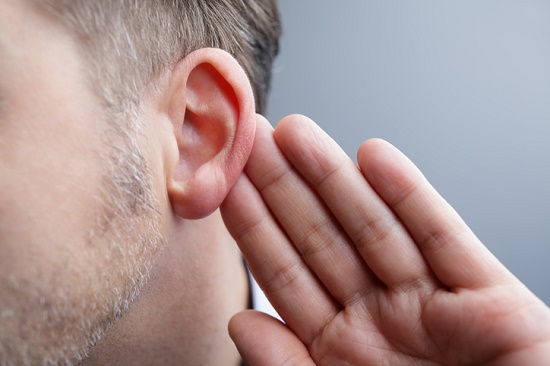
Your chances of developing hearing loss at some point in your life are regretfully very high, even more so as you age. In the US, 48 million individuals report some amount of hearing loss, including just about two-thirds of adults age 70 and older.
That’s why it’s important to understand hearing loss, so that you can identify the signs and symptoms and take preventative actions to avoid damage to your hearing. In this article, we’re going to zero in on the most common form of hearing loss: sensorineural hearing loss.
The three types of hearing loss
In general, there are three forms of hearing loss:
- Conductive hearing loss
- Sensorineural hearing loss
- Mixed hearing loss (a combination of conductive and sensorineural)
Conductive hearing loss is less common and results from some form of obstruction in the outer or middle ear. Typical causes of conductive hearing loss include impacted earwax, ear infections, benign tumors, perforated eardrums, and genetic malformations of the ear.
This article will focus on sensorineural hearing loss as it is by far the most common.
Sensorineural hearing loss
This type of hearing loss is the most common and accounts for about 90 percent of all documented hearing loss. It is the result of injury to the hair cells (the nerves of hearing) of the inner ear or to the nerves running from the inner ear to the brain.
With sensorineural hearing loss, sound waves enter the outer ear, strike the eardrum, and arrive at the inner ear (the cochlea and hair cells) as normal. However, because of damage to the hair cells (the tiny nerve cells of hearing), the sound signal that is provided to the brain for processing is weakened.
This weakened signal is perceived as muffled or faint and usually affects speech more than other kinds of lower-pitched sounds. Additionally, unlike conductive hearing loss, sensorineural hearing loss tends to be permanent and cannot be corrected with medicine or surgery.
Causes and symptoms
Sensorineural hearing loss has a range of possible causes, including:
- Genetic disorders
- Family history of hearing loss
- Meniere’s Disease or other disorders
- Head trauma
- Benign tumors
- Exposure to loud noise
- The aging process (presbycusis)
The last two, direct exposure to loud noise and aging, constitute the most frequent causes of sensorineural hearing loss, which is honestly great news since it suggests that most cases of hearing loss can be prevented (you can’t prevent aging, obviously, but you can limit the collective exposure to sound over the course of your lifetime).
To understand the symptoms of sensorineural hearing loss, you should always remember that injury to the nerve cells of hearing almost always comes about very slowly. Consequently, the symptoms progress so slowly that it can be nearly impossible to detect.
A slight measure of hearing loss each year will not be very noticeable to you, but after a number of years it will be very noticeable to your family and friends. So even though you may think everyone is mumbling, it may be that your hearing loss is catching up to you.
Here are some of the signs and symptoms to look for:
- Difficulty understanding speech
- Problems following conversions, particularly with more than one person
- Turning up the TV and radio volume to unreasonable levels
- Continually asking others to repeat themselves
- Perceiving muffled sounds or ringing in the ears
- Becoming exceedingly tired at the end of the day
If you notice any of these symptoms, or have had people tell you that you might have hearing loss, it’s best to schedule a hearing test. Hearing tests are fast and painless, and the sooner you treat your hearing loss the more hearing you’ll be able to maintain.
Prevention and treatment
Sensorineural hearing loss is mostly preventable, which is great news since it is without question the most common type of hearing loss. Millions of cases of hearing loss in the United States could be averted by adopting some simple protective measures.
Any sound above 80 decibels (the volume of city traffic inside your car) can potentially affect your hearing with extended exposure.
As the decibel level increases, the amount of time of safe exposure decreases. That means at 100 decibels (the volume of a rock concert), any exposure over 15 minutes could harm your hearing.
Here are a few tips on how you can protect against hearing loss:
- Employ the 60/60 rule – when listening to a mp3 player with headphones, listen for no more than 60 minutes at no more than 60 percent of the maximum volume. Additionally, think about buying noise-canceling headphones, as these will require lower volumes.
- Safeguard your ears at live shows – rock concerts can vary from 100-120 decibels, far above the ceiling of safe volume (you could damage your hearing within 15 minutes). Minimize the volume with the aid of foam earplugs or with musician’s plugs that preserve the quality of the music.
- Protect your ears at the workplace – if you work in a loud profession, talk to your employer about its hearing protection program.
- Safeguard your hearing at home – Several household and recreational activities generate high-decibel sounds, including power saws, motorcycles, and firework displays. Always use ear protection during prolonged exposure.
If you already have hearing loss, all hope is not lost. Hearing aids, while not able to completely restore your hearing, can significantly improve your life. Hearing aids can enhance your conversations and relationships and can protect against any further consequences of hearing loss.
If you suspect you might have sensorineural hearing loss, schedule your quick and simple hearing test today!
